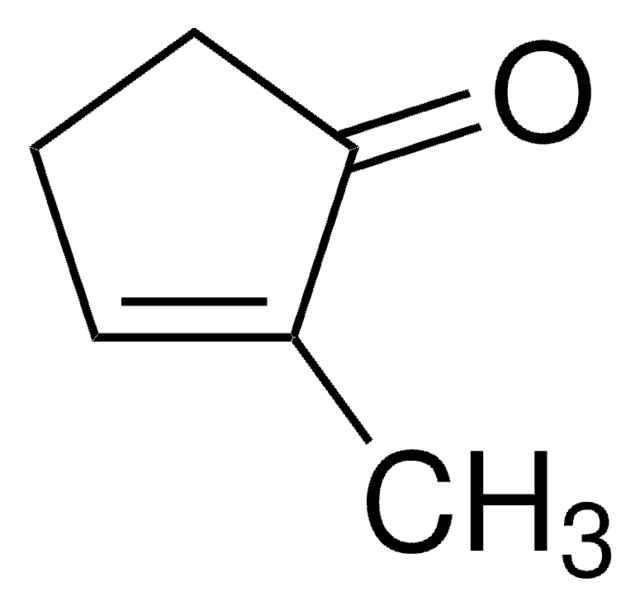모든 사진(2)
About This Item
실험식(Hill 표기법):
C6H2Br4O
CAS Number:
Molecular Weight:
409.70
EC Number:
MDL number:
UNSPSC 코드:
12352100
PubChem Substance ID:
NACRES:
NA.22
추천 제품
Quality Level
분석
90%
형태
solid
작용기
bromo
ketone
저장 온도
2-8°C
SMILES string
BrC1=CC(Br)(Br)C=C(Br)C1=O
InChI
1S/C6H2Br4O/c7-3-1-6(9,10)2-4(8)5(3)11/h1-2H
InChI key
NJQJGRGGIUNVAB-UHFFFAOYSA-N
일반 설명
2,4,4,6-Tetrabromo-2,5-cyclohexadienone forms solid charge-transfer molecular complexes with 4-(aminomethyl)piperidine and their spectroscopic characteristics were studied.
애플리케이션
2,4,4,6-Tetrabromo-2,5-cyclohexadienone was used as catalyst for efficient deoxygenation of sulfoxides to their corresponding sulfides with 1,3-dithiane. It was also used as reagent for conversion of alcohols to azides.
신호어
Warning
유해 및 위험 성명서
Hazard Classifications
Eye Irrit. 2 - Skin Irrit. 2 - STOT SE 3
표적 기관
Respiratory system
Storage Class Code
11 - Combustible Solids
WGK
WGK 3
Flash Point (°F)
Not applicable
Flash Point (°C)
Not applicable
개인 보호 장비
dust mask type N95 (US), Eyeshields, Gloves
이미 열람한 고객
Darren Van Essen et al.
Chemosphere, 266, 129195-129195 (2020-12-15)
Brominated flame retardants (BFRs) can enter aquatic environments where they can have adverse effects on organisms. The BFR, 1,2,5,6-Tetrabromocyclooctane (TBCO), has been introduced as a potential replacement for the major use BRF, Hexabromocyclododecane (HBCD). However, little is known about effects
Jakob Gustavsson et al.
Journal of chromatography. A, 1524, 74-86 (2017-10-17)
The influence of natural organic matter (NOM) on the solid-phase extraction (SPE) efficiency was investigated for legacy and emerging flame retardants (FRs; n=26) in surface water. Three different groups of FRs were analyzed: polybrominated diphenyl ethers (PBDEs), halogenated flame retardants
An efficient method for converting alcohols to azides with 2, 4, 4, 6-tetrabromo-2, 5-cyclohexadienone/PPh3 /Zn (N3)2? 2Py.
Saito A, et al.
Tetrahedron Letters, 38(22), 3955-3958 (1997)
Adel Mostafa et al.
Spectrochimica acta. Part A, Molecular and biomolecular spectroscopy, 118, 1012-1019 (2013-11-05)
The spectroscopic characteristics of the solid charge-transfer molecular complexes (CT) formed in the reaction of the electron donor 4-(aminomethyl) piperidine (4AMP) with the σ-acceptor iodine and the π-acceptors 2,3-dichloro-5,6-dicyano-1,4-benzoquinone (DDQ), 2,4,4,6-tetrabromo-2,5-cyclohexadienone (TBCHD) and 7,7,8,8-tetracyanoquinodimethane (TCNQ) have been studied in chloroform
Giulia Simonetti et al.
International journal of environmental research and public health, 17(11) (2020-05-31)
The occurrence of halogenated organic pollutants in indoor dust can be high due to the presence of textile, electronic devices, furniture, and building materials treated with these chemicals. In this explorative study, we focused on emerging organic pollutants, such as
자사의 과학자팀은 생명 과학, 재료 과학, 화학 합성, 크로마토그래피, 분석 및 기타 많은 영역을 포함한 모든 과학 분야에 경험이 있습니다..
고객지원팀으로 연락바랍니다.

